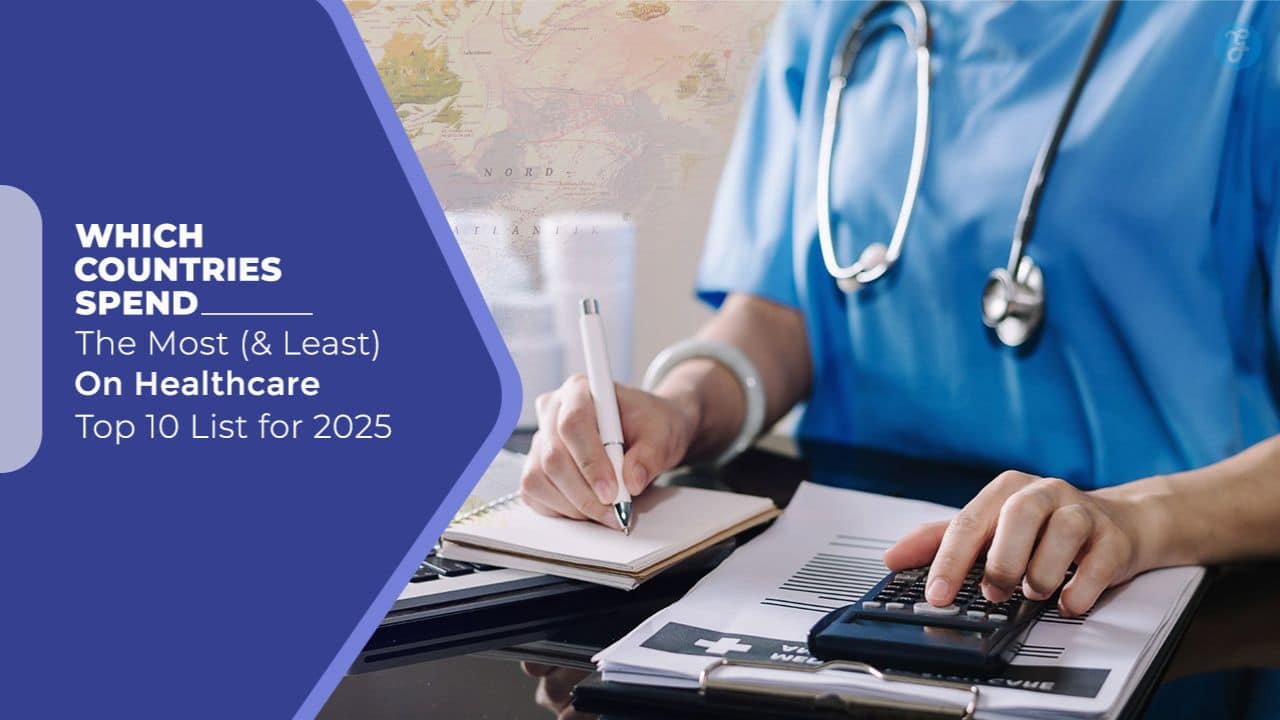The healthcare systems of nations reflect their priorities and challenges, often revealing the intricate balance between public welfare and financial constraints.
Understanding countries that spend the most on healthcare and those spending the least provides valuable insights into global health trends, economic strategies, and policy outcomes.
This article delves into the top spenders and savers in healthcare in 2025, offering a detailed exploration of expenditure patterns, underlying factors, and what these trends mean for the global population.
Understanding Global Healthcare Spending
What Is Healthcare Spending?
Healthcare spending encompasses all expenses related to medical services, hospital care, prescription drugs, medical equipment, public health programs, and administrative costs. It reflects how a nation allocates its resources to ensure the health and well-being of its citizens.
Key Metrics for Measuring Healthcare Spending
Several benchmarks help quantify healthcare expenditure:
- Per Capita Spending: The average amount a country spends per individual annually on healthcare.
- Percentage of GDP: The share of a country’s economic output allocated to healthcare.
- Public vs. Private Spending: The balance between government-funded and out-of-pocket healthcare expenses.
Top 10 Countries Spending the Most on Healthcare in 2025
Let’s take a look.
1. United States
- Per Capita Spending: Approximately $12,500.
- Percentage of GDP: 17%.
- Public vs. Private Split: 49% public, 51% private.
The United States continues to top the list of countries that spend the most on healthcare, driven by advanced medical technology, high administrative costs, and the privatized nature of its system.
However, this spending does not always equate to better outcomes, with challenges such as unequal access and high patient costs persisting.
Key Details Table:
| Metric | United States |
| Per Capita Spending | $12,500 |
| Percentage of GDP | 17% |
| Public vs. Private Split | 49% public, 51% private |
2. Germany
- Per Capita Spending: Around $7,000.
- Percentage of GDP: 12%.
- Public vs. Private Split: 85% public, 15% private.
Germany’s well-structured universal healthcare system ensures broad access and high-quality care. The country prioritizes preventive medicine and heavily invests in medical research and infrastructure.
Key Details Table:
| Metric | Germany |
| Per Capita Spending | $7,000 |
| Percentage of GDP | 12% |
| Public vs. Private Split | 85% public, 15% private |
3. Switzerland
- Per Capita Spending: Roughly $9,500.
- Percentage of GDP: 11.5%.
- Public vs. Private Split: 35% public, 65% private.
Switzerland’s healthcare system is among the most efficient globally. With mandatory health insurance and strong public-private collaboration, the nation’s high spending yields excellent health outcomes.
Key Details Table:
| Metric | Switzerland |
| Per Capita Spending | $9,500 |
| Percentage of GDP | 11.5% |
| Public vs. Private Split | 35% public, 65% private |
4. Norway
- Per Capita Spending: Estimated at $7,500.
- Percentage of GDP: 11%.
- Public vs. Private Split: 90% public, 10% private.
Norway’s healthcare system is predominantly government-funded, emphasizing equity and accessibility. High investments in primary healthcare contribute to the nation’s robust outcomes.
Key Details Table:
| Metric | Norway |
| Per Capita Spending | $7,500 |
| Percentage of GDP | 11% |
| Public vs. Private Split | 90% public, 10% private |
5. Sweden
- Per Capita Spending: Approximately $6,800.
- Percentage of GDP: 10.8%.
- Public vs. Private Split: 83% public, 17% private.
Sweden’s commitment to preventive care and digital health solutions positions it among the top healthcare spenders. The focus on sustainability and efficiency ensures long-term benefits for its citizens.
Key Details Table:
| Metric | Sweden |
| Per Capita Spending | $6,800 |
| Percentage of GDP | 10.8% |
| Public vs. Private Split | 83% public, 17% private |
6. Japan
- Per Capita Spending: Approximately $5,500.
- Percentage of GDP: 10%.
- Public vs. Private Split: 70% public, 30% private.
Japan’s healthcare system emphasizes preventive care and longevity. Universal healthcare, subsidized public health programs, and a strong emphasis on technology make Japan a leader in cost-effective healthcare delivery.
Key Details Table:
| Metric | Japan |
| Per Capita Spending | $5,500 |
| Percentage of GDP | 10% |
| Public vs. Private Split | 70% public, 30% private |
7. France
- Per Capita Spending: Approximately $5,200.
- Percentage of GDP: 11%.
- Public vs. Private Split: 80% public, 20% private.
France is renowned for its well-balanced healthcare system, combining universal coverage with high-quality services. Its focus on patient outcomes and affordable care contributes to its global reputation for healthcare excellence.
Key Details Table:
| Metric | France |
| Per Capita Spending | $5,200 |
| Percentage of GDP | 11% |
| Public vs. Private Split | 80% public, 20% private |
8. Australia
- Per Capita Spending: Around $5,000.
- Percentage of GDP: 10%.
- Public vs. Private Split: 68% public, 32% private.
Australia’s healthcare system is a hybrid model, balancing public funding with private options. Programs like Medicare ensure universal access, while private insurance enhances service flexibility.
Key Details Table:
| Metric | Australia |
| Per Capita Spending | $5,000 |
| Percentage of GDP | 10% |
| Public vs. Private Split | 68% public, 32% private |
9. Canada
- Per Capita Spending: Around $4,800.
- Percentage of GDP: 10.2%.
- Public vs. Private Split: 75% public, 25% private.
Canada’s healthcare system is characterized by universal coverage through a publicly funded framework. While access remains equitable, challenges like long wait times persist.
Key Details Table:
| Metric | Canada |
| Per Capita Spending | $4,800 |
| Percentage of GDP | 10.2% |
| Public vs. Private Split | 75% public, 25% private |
10. United Kingdom
- Per Capita Spending: Approximately $4,500.
- Percentage of GDP: 9.9%.
- Public vs. Private Split: 79% public, 21% private.
The UK’s National Health Service (NHS) remains a benchmark for universal healthcare systems. Funded largely by taxation, it delivers free-at-point-of-service care, though challenges like staffing shortages impact efficiency.
Key Details Table:
| Metric | United Kingdom |
| Per Capita Spending | $4,500 |
| Percentage of GDP | 9.9% |
| Public vs. Private Split | 79% public, 21% private |
Interactive Comparison Table: Healthcare Spending by Country (2025)
| Rank | Country | Per Capita Spending | % of GDP | Public vs. Private (%) |
| 1 | United States | $12,500 | 17% | 49/51 |
| 2 | Germany | $7,000 | 12% | 85/15 |
| 3 | Switzerland | $9,500 | 11.5% | 35/65 |
| 4 | Norway | $7,500 | 11% | 90/10 |
| 5 | Sweden | $6,800 | 10.8% | 83/17 |
| 6 | Japan | $5,500 | 10% | 70/30 |
| 7 | France | $5,200 | 11% | 80/20 |
| 8 | Australia | $5,000 | 10% | 68/32 |
| 9 | Canada | $4,800 | 10.2% | 75/25 |
| 10 | United Kingdom | $4,500 | 9.9% | 79/21 |
Factors Influencing Healthcare Spending Levels
Economic Factors
- National wealth and GDP play a critical role in determining healthcare budgets.
- Developed countries often allocate higher percentages to ensure comprehensive coverage.
Social and Demographic Factors
- Aging populations in high-income countries demand increased spending.
- Developing nations face challenges addressing urban-rural disparities.
Technological Advancements
- Investment in medical technology drives up costs but improves outcomes.
- Telemedicine and digital health tools are reshaping spending patterns.
Cultural and Policy Decisions
- Universal healthcare systems prioritize equity, influencing spending.
- Cultural attitudes towards health impact funding priorities.
Why Healthcare Spending Does Not Always Equal Quality
The Paradox of High Spending and Poor Outcomes
- Case Study: The U.S. struggles with high costs yet ranks low in access and equity.
Examples of Efficient Systems with Low Costs
- Cuba: Exceptional outcomes despite limited resources.
- Rwanda: Strategic investments in primary healthcare yield significant returns.
Conclusion: What We Can Learn from Healthcare Spending Patterns
Exploring countries that spend the most on healthcare and those spending the least reveals critical lessons about efficiency, equity, and priorities.
While high spending can enhance outcomes, it is not the sole determinant of success. By adopting innovative policies and focusing on preventative care, nations can optimize their healthcare systems to serve their populations effectively.
As global challenges evolve, these insights offer a roadmap for improving healthcare worldwide.









































